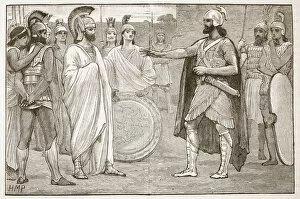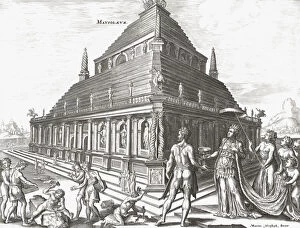Satrap Collection
Satrap, a term derived from ancient Persia, refers to the regional governors appointed by the Persian kings to oversee specific territories
All Professionally Made to Order for Quick Shipping
Satrap, a term derived from ancient Persia, refers to the regional governors appointed by the Persian kings to oversee specific territories. One of the most famous satraps in history was Mausolus, who ruled over Lydia and Ionia during the 5th century BC. Mausolus is best known for commissioning the construction of his grand mausoleum at Halicarnassus (present-day Bodrum, Turkey). This magnificent tomb became one of the Seven Wonders of the Ancient World and showcased remarkable architectural prowess. The structure was designed by Greek architects Satyros and Pythius of Priene. The Mausoleum at Halicarnassus stood as a testament to Mausolus' power and wealth. It featured intricate sculptures depicting various scenes from mythology and history. Engravings show figures from painted vases portraying Darius, Artemisia building the mausoleum in 1640, and an interview between Agesilaus and Pharnabazos lithographed on canvas. Intriguingly, there are depictions showcasing combat with Amazons near this monumental tomb. These fierce female warriors were legendary figures known for their strength and bravery. Another captivating tale involves Parysatis defending her son Cyrus against accusations of plotting his brother's murder. Cyrus was a Persian prince accused by Tissaphernes while serving as Satrap of Lydia and Ionia from 408 to 401 BC. A meeting between Agesilaos II, King of Sparta, and Pharnabazos II also took place around this time in Hellespontine Phrygia when they agreed upon certain terms regarding their respective territories. The Mausoleum at Halicarnassas remained an awe-inspiring sight until its eventual destruction over centuries due to earthquakes or looting.










